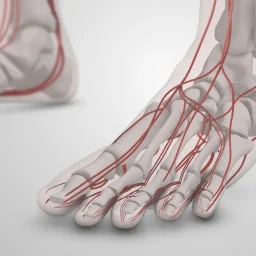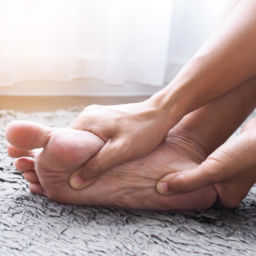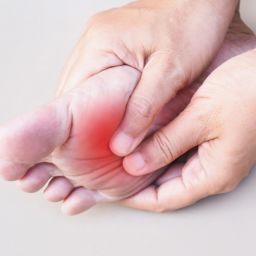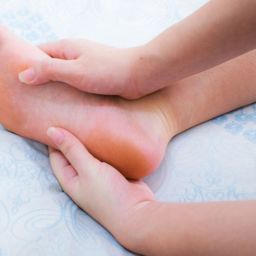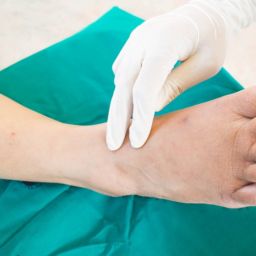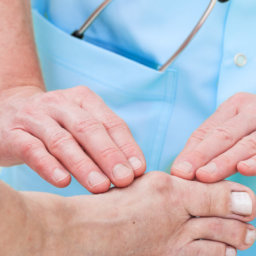
Burning Foot Pain Syndrome and Causes
Burning pain to feet can be caused by multiple things but it is typically related to a nerve issue.
Burning pain on the top of the foot can be indicative of several conditions, one of which is extensor tendonitis. This condition involves inflammation of the extensor tendons, typically caused by overuse or injury. Medical history often reveals repetitive activities or sudden trauma as contributing factors. The burning pain may occur due to irritation of the peripheral nerves in the foot, leading to sensations of heat and discomfort. A clinical examination along with imaging studies can aid in diagnosis. In some cases, blood tests may be recommended to rule out underlying systemic conditions contributing to tendon inflammation.
What are some Symptoms Associated with Burning Foot?
Symptoms of nerve pain can include burning, tingling, or numbness. Burning sensation in the feet can also be accompanied by a feeling of “heaviness” or difficulty walking. You may develop peripheral neuropathy due to many factors including but not limited to various health conditions like Diabetes, history of chemotherapy use, nerve damage, exposure to environmental or occupational hazardous material, vitamin deficiencies, peripheral nerve impingement and many more.
Does Burning Pain on Top of Your Feet Mean You Have Neuropathy?
Burning pain on the top of the feet can be associated with neuropathy, but it’s not a definitive indicator on its own. Neuropathy is specifically differentiated from Radiculopathy which is nerve symptoms that are caused by an issue with the spinal cord. Often burning foot pain at night occurs due to a spinal or peripheral nerve impingement. Whereas foot pain that is only present during weight bearing activity is typically caused by musculoskeletal conditions such as extensor tendonitis or midfoot arthritis. It is also important to discern burning foot pain which can be exacerbated by peripheral arterial disease.
Your provider may order some further testing including blood testing, nerve conduction velocity testing, and spinal imaging. There are many treatment options for burning foot pain including but not limited to change in shogear, custom inserts, injection therapy, vitamin supplementation, nerve pain medication, anti-anxiety medication, and physical therapy. Providing your physician with a complete and thorough medical history is essential to discerning the cause of your pain symptoms and finding the ideal treatment regime.
What You Need to Know about Peripheral Artery Disease (PAD)
Peripheral Artery Disease (PAD) is a condition that affects the blood vessels outside of the heart and brain, commonly leading to reduced blood flow to the limbs, especially the legs and feet. While PAD primarily affects blood vessels, it can indirectly contribute to burning pain on the top of the foot through several mechanisms.
1. Nerve Pain: Reduced blood flow from PAD can result in inadequate oxygen supply to nerves, leading to nerve damage and neuropathic symptoms such as burning pain, tingling, and numbness. This type of nerve pain is known as peripheral neuropathy, which can affect the feet and lower legs.
2. Tarsal Tunnel Syndrome: PAD can also increase the risk of developing conditions like tarsal tunnel syndrome, where the posterior tibial nerve in the tarsal tunnel (a space in the ankle) becomes compressed or irritated. This compression can cause tingling, burning pain, and other discomfort on the top of the foot.
3. Vitamin Deficiency: In some cases, PAD may be associated with underlying conditions like vitamin deficiencies (e.g., vitamin B12 deficiency) that can also lead to neuropathic symptoms such as tingling and burning sensations on the top of the foot.
4. Small Fiber Neuropathy: PAD-related vascular issues can contribute to small fiber neuropathy, affecting the small nerves responsible for sensation. This can manifest as tingling and burning sensations in the feet, including the top of the foot.
In summary, while PAD primarily affects blood vessels, its consequences like reduced oxygen supply to nerves and associated conditions can lead to nerve-related symptoms such as burning pain on the top of the foot.
How Do You Treat Tingling and Burning Sensation in Feet
Treating tingling and burning sensations in the feet involves addressing the underlying cause. If nerve damage is suspected, various approaches can be considered:
1. Identify Underlying Health Conditions: Medical evaluation can help identify health conditions contributing to neuropathic symptoms. These may include diabetes, vitamin deficiencies, autoimmune disorders, or nerve compression syndromes.
2. Manage Spinal Cord Issues: If spinal cord issues or nerve compression are involved, treatments such as physical therapy, spinal decompression, or surgery may be recommended to alleviate pressure on nerves.
3. Address Specific Syndromes: Conditions like Burning Feet Syndrome, characterized by a burning sensation in the feet, may require medications to manage symptoms and lifestyle adjustments to reduce discomfort.
4. Consider Gastric Bypass Implications: In cases where gastric bypass surgery contributes to neuropathy due to nutritional deficiencies, nutritional supplementation and dietary modifications are crucial for nerve health.
5. Medications: Depending on the cause and severity of symptoms, medications like pain relievers, nerve-stabilizing agents, or topical treatments may be prescribed.
6. Lifestyle Changes: Maintaining a healthy weight, regular exercise, managing blood sugar levels (if diabetic), and avoiding alcohol and tobacco can also support nerve health and reduce symptoms.
Overall, a comprehensive approach involving medical management, lifestyle adjustments, and targeted treatments based on the underlying cause is essential for effectively treating tingling and burning sensations in the feet.
Dr. Deepika Ratnala strives to ensure each patient gets the proper care on an individual basis, thereby ensuring optimal outcomes for her patients foot ailments. Areas of expertise are bunion, hammertoes, sports medicine, reconstructive surgery and trauma. Providing and teaching preventative methods and habits to patients, helps her patients understand how to mitigate their foot conditions. After trying various conservative methods is when Dr. Ratnala would elect to offer surgical procedures. She is available to book an appointment at our foot and ankle clinic in Coral Springs and Pembroke Pines.

